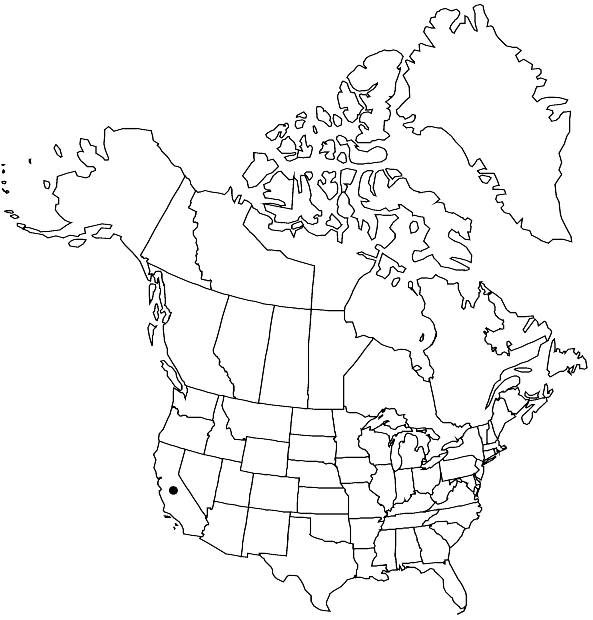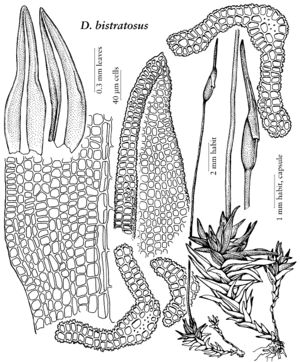Didymodon bistratosus
Nova Hedwigia 59: 354, figs 1–25. 1994,.
Plants deep green distally, strongly reddish-brown proximally. Stems to 0.2 cm, central strand present. Stem-leaves appressed weakly twisted clockwise or occasionally counterclockwise when dry, spreading and weakly reflexed above the base when moist; monomorphic, long-ovate to ellipticlanceolate, adaxial surface broadly channeled at midleaf, concave to occasionally somewhat naviculate apically, usually 1–1.2 mm, base weakly differentiated, ovate; margins plane above, recurved below, entire; apex obtuse or acute, occasionally ending in a short, clear, sharp cell; costa percurrent, broad, lacking an adaxial pad of cells, adaxial cells quadrate-hexagonal, papillose, in 6–8 rows at mid leaf, guide cells in 1 layer; basal-cells weakly differentiated in small area juxtacostally, very shortrectangular, walls evenly thickened and not perforated; roundedquadrate, 7–10 mm in width, 1: 1, papillae low, fused to a thickened and irregularly shaped lens covering lumen, cell-walls evenly thickened, weakly bulging on both sides of lamina, 2 (–3) -stratose. Specialized asexual reproduction not seen. Seta 0.9–1.3 cm. Capsule 1.2–1.7 mm; peristome teeth 32, linear, twisted about once counterclockwise, to 700 µm. Spores 8–10 µm. Distal laminal KOH reaction red.
Phenology: Capsules mature spring (Apr).
Habitat: Sandstone, concrete
Elevation: moderate elevations (300 m)
Distribution

Calif., Europe (Spain)
Discussion
Didymodon bistratosus differs from the similar D. australasiae in the strongly bicolorous habit, deep green above and dense red below and the bistratose and occasionally marginally tristratose distal lamina. Didymodon rigidulus var. subulatus and D. nicholsonii are similar in the bistratose upper lamina but both have lanceolate leaves and robust stereid bands. Bryoerythrophyllum columbianum also has much the same reddish appearance, short leaf shape, and has a similarly broad upper costa, but the lamina is unistratose and the leaf apex of B. columbianum is sharply mucronate, rigid, fragile, and comprised of elongate cells.
Selected References
Lower Taxa
"um" is not declared as a valid unit of measurement for this property."um" is not declared as a valid unit of measurement for this property.
